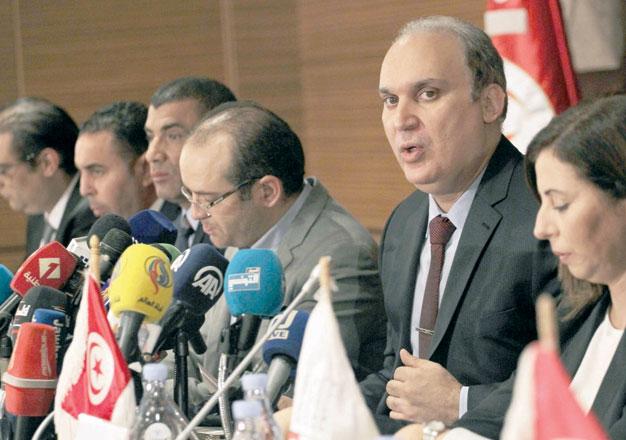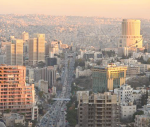You are here
Tunisia since revolution which sparked Arab Spring
By AFP - Jul 25,2019 - Last updated at Jul 25,2019

This file photo taken on April 6 shows Tunisian President Beji Caid Essebsi waving to supporters during the launch of his party Nidaa Tounes' congress in the coastal city of Monastir, about 160 kilometres south of the capital Tunisa (AFP photo)
TUNIS — Tunisia witnessed the first of the Arab Spring uprisings that rocked the Middle East in 2011, forcing out several long-time leaders.
Here is a recap of key developments in the North African country since.
President flees
Demonstrations erupt in December 2010 after the self-immolation of a fruit seller protesting police harassment and unemployment.
After weeks of unrest, dictator Zine Al Abidine Ben Ali quits in January 2011, ending 23 years in power.
The first leader to be toppled by the Arab Spring, he flees to Saudi Arabia.
Victory for Islamists
In October 2011, Tunisia's first free election sees Islamist group Ennahdha, legalised in March, win 89 of 217 seats in a new constituent assembly.
The assembly elects former opposition leader Moncef Marzouki as president in December. Hamadi Jebali, Ennahdha's number two, is charged with forming a government.
Attacks, unrest
In April 2012, police clash with thousands of jobless protesters in the southwestern mining belt.
More violent demonstrations follow in June and August, and Islamists stage attacks.
In late November riots break out in Siliana, southwest of Tunis, injuring 300.
Strikes and demonstrations affect industry, public services, transport and business, with unrest mostly in the economically marginalised interior.
In February 2013, prominent anti-Islamist opposition leader Chokri Belaid is assassinated in Tunis.
In July, leftist opposition leader Mohamed Brahmi is also shot dead. Daesh terrorists claim both killings.
Democratic transition
In January 2014 a new constitution is adopted, a year later than planned. A government of technocrats is formed and Islamists withdraw from power.
In October the secular Nidaa Tounes Party led by Beji Caid Essebsi comes top in parliamentary polls and forms a coalition with Ennahdha.
Two months later, Essebsi wins Tunisia's first free presidential election.
Carnage
In 2015 the country suffers three attacks claimed by Daesh group militants based in neighbouring Libya.
The attacks leave 72 dead, mostly foreign tourists and security personnel, including at the Bardo Museum in Tunis and a Mediterranean coastal resort.
In March 2016, terrorists attack security installations in the town of Ben Guerdane on the Libyan border, leaving scores dead. Authorities say it was a thwarted effort to establish an Islamic emirate in the country.
Although security has improved, a state of emergency established in 2015 has been repeatedly extended.
Fresh protests
In January 2016, a new wave of protests against poverty and unemployment erupts after the death of a young unemployed man in a demonstration. Authorities impose a curfew.
In May 2017, a sit-in at the El Kamour oil and gas plant descends into clashes with security forces.
In January 2018, new protests erupt after an austerity budget takes effect.
Political instability
Essebsi in September announces the end of his party's alliance with Ennahdha, which had been part of a unity government since 2016.
In November the prime minister, Youssef Chahed, announces a government reshuffle but faces criticism from the president.
In January 2019 tensions mount when Essebsi accuses Chahed being in a secret pact with Ennahdha ahead of elections due later in the year.
In June 2019, Chahed is elected head of a new political party, Tahya Tounes.
On July 25, the ailing Essebsi dies in hospital at the age of 92 and parliamentary speaker Mohamed Ennaceur is announced as interim president for up to 90 days.
Related Articles
TUNIS — Demonstrations erupt in central Tunisia in December 2010 after the self-immolation of a fruit seller protesting police harassment an
TUNIS — Election fever is sweeping Tunisia well ahead of parliamentary and presidential polls set for late 2019.President Beji Caid Essebsi
TUNIS — Campaigning for Tunisia's presidential election opened Monday with 26 candidates vying to replace late leader Beji Caid Essebsi in a


















